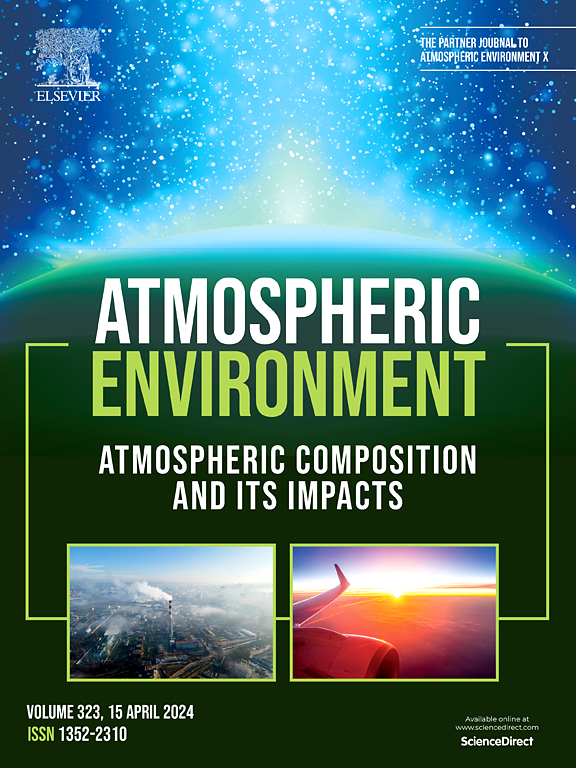Satellite-borne identification and quantification of wildfire smoke emissions in North America via a novel UV-based index
IF 4.2
2区 环境科学与生态学
Q2 ENVIRONMENTAL SCIENCES
引用次数: 0
Abstract
Estimation of the smoke emissions released by wildfires has become a significant concern in the context of atmospheric environment and global climate change, in which satellite-borne optical remote sensing plays an important role. Previous studies have utilized the satellite-based aerosol optical depth (AOD) algorithm to estimate the wildfire-related total particulate matter emissions (TPM). However, this “top-down” approach is often impeded by false or missed detection due to extensive cloud cover and smokes with high concentrations, resulting in an underestimation of TPM. To address these limitations, this study proposes a new ultraviolet (UV)-based methodology for the identification and quantification of wildfire smokes from satellite platforms. The spectral characteristics of smoke plumes and different cloud types, including cirrus and cumulus clouds, are characterized by China's Haiyang-1C/D (HY-1C/D) satellites within both UV and visible wavelengths. Specifically, the 355 nm UV band displays a strong absorption pattern associated with smoke plumes. Based on this diagnostic spectral feature, an ultraviolet smoke index (UVSI) is developed, which can mitigate the impact of high background heterogeneity. Moreover, in comparison with the MODIS AOD algorithm, the UVSI index can not only improve the precision of smoke detection, especially for smokes with high concentrations, but also demonstrate a strong correlation with AOD at the numerical level. Accordingly, this study proposes the use of UVSI in place of AOD for TPM estimation. Combined with the fire radiative energy (FRE) measured by GOES-R satellite, the smoke emission coefficient (Ce) can be determined, which is 34.37 g MJ−1 for the September 2020 burning season in North America. The above results would provide a new reference for operational monitoring and assessment of wildfire smokes.

求助全文
约1分钟内获得全文
求助全文
来源期刊

Atmospheric Environment
环境科学-环境科学
CiteScore
9.40
自引率
8.00%
发文量
458
审稿时长
53 days
期刊介绍:
Atmospheric Environment has an open access mirror journal Atmospheric Environment: X, sharing the same aims and scope, editorial team, submission system and rigorous peer review.
Atmospheric Environment is the international journal for scientists in different disciplines related to atmospheric composition and its impacts. The journal publishes scientific articles with atmospheric relevance of emissions and depositions of gaseous and particulate compounds, chemical processes and physical effects in the atmosphere, as well as impacts of the changing atmospheric composition on human health, air quality, climate change, and ecosystems.
 求助内容:
求助内容: 应助结果提醒方式:
应助结果提醒方式:


